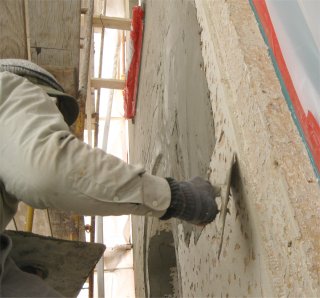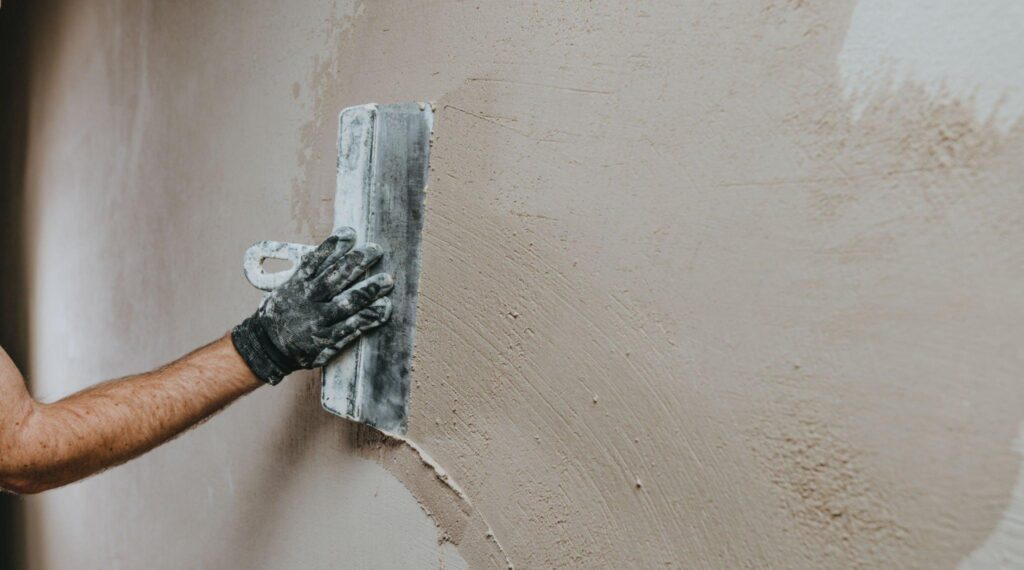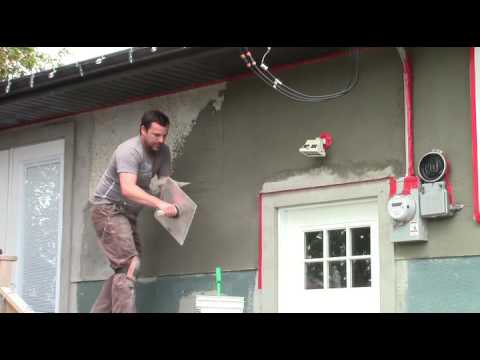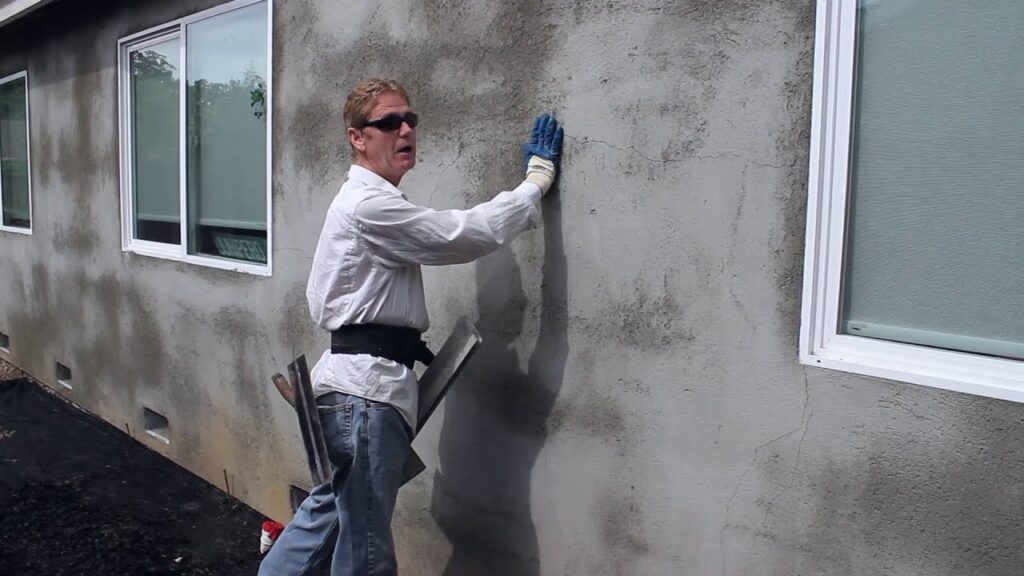Have you ever wondered if it’s possible to enhance the appearance of your home’s exterior without the hassle of removing old stucco? Well, look no further! In this article, we will explore the fascinating technique of stuccoing over old stucco. By following a few simple steps, you can effortlessly transform your weathered stucco into a fresh and modern finish, all while saving time and money. Whether you’re a seasoned DIY enthusiast or a homeowner looking for a cost-effective way to refresh your home’s exterior, stucco over old stucco might just be the solution you’ve been searching for.

Preparing the Surface
Inspecting the Old Stucco
Before applying new stucco over old stucco, it is vital to inspect the existing surface to ensure that it is in good condition. Take a close look at the old stucco for any signs of cracks, chips, or other damage. If you notice any areas that are significantly deteriorated, it may be necessary to repair them before proceeding.
Cleaning the Old Stucco
Once you have inspected the old stucco and made any necessary repairs, the next step is to thoroughly clean the surface. Use a pressure washer or a high-quality scrub brush and mild detergent to remove any dirt, dust, or debris that has accumulated over time. It is essential to start with a clean surface to ensure proper adhesion of the new stucco.
Repairing Damaged Areas
If you discovered any damaged areas during the inspection, it is important to address them before applying the new stucco. Repairing these damaged areas will help create a smooth and even surface. Use a stucco patching compound to fill in any cracks or chips, following the manufacturer’s instructions. Allow the patching compound to cure completely before moving on to the next step.
Primers and Bonding Agents
Choosing a Primer
Choosing the right primer for stucco is crucial to achieve a successful and long-lasting application. Look for a primer specifically formulated for stucco surfaces. It should provide excellent adhesion, promote uniform color, and enhance the durability of the final stucco finish. Consider the type of stucco you plan to apply and consult with a professional if you’re unsure about the appropriate primer to use.
Applying the Primer
Once you have selected the appropriate primer, carefully follow the manufacturer’s instructions for application. Ensure that the temperature and humidity conditions are within the recommended range. Apply the primer evenly across the entire surface using a roller or a brush. Make sure to cover all areas thoroughly, including corners and edges. Allow the primer to dry completely before proceeding to the next step.
Using a Bonding Agent
In some cases, it may be necessary to use a bonding agent in addition to the primer. Bonding agents are especially useful when applying new stucco over old stucco, as they enhance the adhesion between the two layers. Apply the bonding agent according to the manufacturer’s instructions and allow it to dry completely before moving forward with the stucco application.

Applying the New Stucco
Mixing the Stucco
Before applying the stucco, ensure that you have prepared the stucco mix properly. Follow the instructions provided by the manufacturer, as the mixing ratios may vary depending on the specific product you are using. Generally, you will need to mix water with the stucco mix until you achieve a smooth and workable consistency.
Applying the Scratch Coat
The scratch coat is the first layer of stucco that is applied to the prepared surface. It creates a rough texture to improve the adhesion of the subsequent coats. Use a trowel to apply the scratch coat evenly across the surface, ensuring a consistent thickness of about 3/8 to 1/2 inch. Make horizontal and vertical scratch marks on the surface to provide better bondability for the next coat.
Installing the Brown Coat
Once the scratch coat has had enough time to partially dry, usually for about 24 hours, it’s time to move on to the next layer called the brown coat. Mix a new batch of stucco following the manufacturer’s instructions and apply it over the scratch coat. Use a trowel to spread the stucco evenly and maintain a uniform thickness of approximately 3/8 inch. Smooth out the surface as much as possible, taking care to eliminate any high or low spots.
Creating Textures and Finishes
After the brown coat has cured, you can add texture and finish to the stucco surface to achieve the desired look. There are various techniques you can use, such as stippling, swirling, or creating a pattern with a float. Experiment with different tools and methods to find the texture that best suits your taste. Take your time to ensure that the texture is even and consistent across the entire surface.

Curing and Finishing
Curing Time
Allow the stucco to cure properly before applying any finishing touches. The curing time can vary depending on factors such as temperature and humidity. Typically, it takes about one to two weeks for stucco to cure completely. During this time, it is essential to keep the stucco surface moist by regularly misting it with water. This helps prevent cracking and promotes proper hydration of the stucco.
Applying a Finish Coat
Once the stucco has cured, you can apply a finish coat to further enhance its appearance and durability. A finish coat provides the final layer of protection and can be tinted or painted to achieve the desired color. Follow the manufacturer’s instructions for application, and ensure that the finish coat is applied evenly and smoothly. Take care to cover the entire surface, including any textured areas.
Sealing the Stucco
To prolong the lifespan of your newly applied stucco and protect it from moisture, it is essential to apply a sealer. A good quality stucco sealer will help prevent water penetration and minimize the risk of efflorescence. Efflorescence is a white, powdery substance that can form on the surface of stucco due to moisture. Follow the manufacturer’s instructions for applying the sealer, and make sure to cover all areas thoroughly.

Maintenance and Repair
Regular Inspections
To ensure the longevity and integrity of your stucco, it is crucial to conduct regular inspections. Check for any signs of damage or deterioration, such as cracks, chips, or discoloration. Promptly address any issues you discover to prevent further damage.
Patching Small Cracks and Chips
For small cracks and chips, you can easily patch them yourself. Clean the area thoroughly and apply a stucco patching compound according to the manufacturer’s instructions. Smooth out the patch to match the surrounding stucco as closely as possible. Allow the patch to cure, and consider applying a sealer to protect the repaired area.
Dealing with Major Damage
If you encounter major damage to your stucco, such as large cracks or extensive deterioration, it is recommended to seek professional assistance. A licensed stucco contractor will be able to evaluate the severity of the damage and provide the most suitable repair solution. Ignoring major damage can lead to further structural issues, so it’s best to address them promptly and professionally.
By following these comprehensive steps, you can successfully apply new stucco over old stucco, ensuring a beautiful and durable finish. Whether you’re upgrading the appearance of your home or repairing existing stucco, thorough preparation, proper application, and regular maintenance are key to a successful stucco project. Remember to consult with professionals for specialized guidance and expertise when needed. Happy stuccoing!


